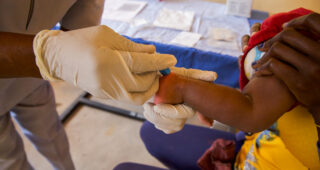Toolkit for Improving Early Infant Diagnosis (EID) Services
Overview
From 2022 – 2023, EGPAF Nigeria implemented the Early Infant Diagnosis (EID) Optimization project, a Johnson & Johnson, Inc. (J&J) funded project designed to increase EID coverage amongst HIV-exposed infants (HEIs). EGPAF worked in close collaboration with health facilities teams and stakeholders including the Nigeria Federal Ministry of Health (MOH), State MOHs, and Partners.
Nigeria Context
In 2020, Nigeria had the second-highest population of children living with HIV (~130,000) globally. Despite the decreasing trend of number of pediatric HIV cases globally in recent years, new pediatric infections in Nigeria increased from 18,000 in 2016 to 21,000 in 2020, and mother-to-child transmission rates remained prohibitively high at >20%. During this same period, EID coverage increased only from 19% to 23%, and was unevenly distributed throughout the country.
To increase overall EID coverage, while also recognizing the potential to scale-up the use of POC for EID in Nigeria, the project selected to work in Taraba and Rivers states to optimize the EID cascade. Eleven comprehensive health facilities across Rivers and Taraba states of Nigeria engaged in the project; three of these comprehensive facilities served as Hub sites for spokes sites. Spoke sites are health facilities that offer patients general primary health care services (e.g., antenatal care (ANC) services, immunizations, general follow-ups and check-ups). Patients that require specialized health services may be referred from a Spoke site to a Hub site. Hub sites offer more intensive care managed by specialized health care workers (HCWs).
Nigeria
Pediatric HIV Diagnosis, Care & Treatment; Point-of-Care Early Infant Diagnosis; Program Optimization



